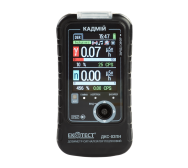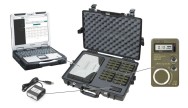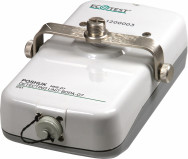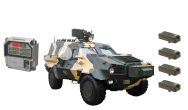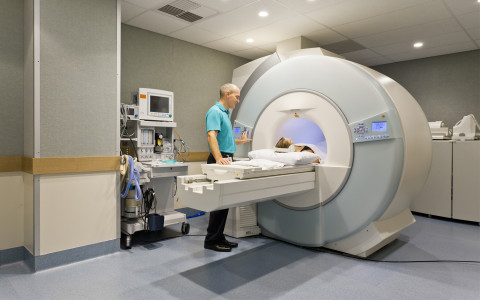Radiation poisoning happens due to exposure to a high dose of ionizing radiation, usually over a short time. Such exposure allows radiation to get inside the human body through breathing, and/or open wounds.
The consequent damage caused to our internal organs is what we refer to as radiation poisoning. Other names for radiation poisoning are radiation sickness, or acute radiation syndrome (ARS).
Not Every Radiation Exposure Causes Radiation Poisoning
We are exposed to natural radiation regularly. However, we are not aware of any major harm resulting from such exposure to non-ionizing natural radiation such as sunlight.
The use of radiation in healthcare for imaging, or cancer treatment, etc. also does not lead to radiation poisoning. Radiation used in healthcare is mostly of the non-ionizing variety, though there are some medical applications of ionizing radiation also.
Certain professions involve regular exposure to mild levels of radiation. Nuclear scientists and technicians, others working at nuclear power plants, people engaged in monitoring and managing nuclear waste dumps, healthcare workers engaged in nuclear medicine and/or radiology, etc. are all vulnerable.
Medical science is still not clear about the exact health effects of sustained exposure to low levels of radiation. However, this much is sure that such exposure does not lead to radiation sickness.
What Is Radiation Sickness?
Medical science encountered radiation sickness for the first time after the bombings of Hiroshima and Nagasaki during World War II. Since then, cases of radiation sickness have been rare.
Radiation sickness typically happens due to some kind of nuclear accident, as in Chernobyl, Ukraine, in 1986. Such a disaster releases radioactive materials in the air, which get inside our bodies as we inhale.
They can also enter through open wounds. Once inside, radioactive materials can damage our tissues and internal organs, causing internal contamination.
If the local food or water supply gets contaminated, Internal contamination is also possible by eating or drinking contaminated food or water.
A small degree of internal contamination may not cause radiation sickness, and may not need treatment. Radiation sickness or acute radiation syndrome (ARS) depends on the amount of radiation absorbed by the body.
The higher the absorption rate, the more acute will be the sickness. The highest level of radiation poisoning leads to ARS.
Radiation Poisoning Treatment
Radiation sickness is not entirely untreatable. The availability and efficacy of the treatment depend on the type of radioactive materials involved, as also the level of exposure.
It is critical, though, to seek medical attention as soon as possible. Fast medical attention helps improve treatment efficacy.
Symptoms
Typical symptoms of radiation sickness include:
- Anorexia
- Blood with vomit and stool
- Diarrhea
- Dizziness and disorientation
- Fast heartbeat
- Fatigue and weakness
- Fever
- Headache
- Low blood pressure
- Malaise
- Nausea,
- Vomiting.
The severity of the symptoms depends on the dose and duration of the exposure. The part of the body most affected also makes a difference. Nausea and vomiting are usually the first symptoms to appear, followed by diarrhea.
The time gap between the exposure and the appearance of the symptoms is an indication of the level of exposure and absorption.
In the case of acute ARS, there are three stages. The initial symptoms of nausea, vomiting, and diarrhea appear in the prodromal phase, which lasts for anything between a few hours to some days.
The latent stage follows when the patient seems to improve. This stage can last from a few days to a few weeks. The final stage is known as the overt or manifest illness stage. The symptoms at this stage are specific to the type of ARS.
Radiation sickness can be of three types, depending on the dose level and the part of the body exposed. Cardiovascular or central nervous system (CNS) sickness results from the exposure of the total body to higher than 3000 rads of radiation.
Cardiovascular or CNS radiation sickness is the most severe form of ARS. It is almost always fatal. Along with the usual symptoms in the prodromal stage, the patient also experiences anxiety, confusion, and loss of consciousness.
After a brief latent phase, there are tremors and convulsions followed by coma and death.
Gastrointestinal ARS results from a lower dose of radiation exposure in the range of 400 or higher rads. The symptoms include nausea, vomiting, loss of electrolytes balance, and severe diarrhea leading to acute dehydration.
Plasma volume reduction and vascular collapse combined with infections may lead to complications that can be life-threatening.
Hematopoietic or bone marrow sickness is the third form of ARS, which results from exposure to radiation in the range of 200-1000 rads. The typical symptoms include atrophy of bone marrow, lymph nodes, and spleen during the latent stage.
Disorders in the blood, sometimes causing severe hemorrhage, result from such atrophy.
Diagnosis
Known exposure followed by the onset of the initial symptoms forms a good basis for diagnosis. The time gap between the exposure and the appearance of the symptoms combined with the severity of the symptoms inform medical professionals about the dose level.
Frequent blood tests to find if there is any drop in the production of white blood cells helps diagnosis. Abnormal changes in the DNA of blood cells also constitute an indication.
The use of radiation detectors like a dosimeter or a survey meter helps in the diagnosis. A dosimeter can help determine the dose of radiation absorbed. A survey meter helps locate the radioactive particles inside the body.
In the case of a radiation emergency, sophisticated radiation detectors can help determine the type of radiation people have been exposed to.
Treatment
Treatment of radiation sickness aims to:
- Decontaminate to prevent further spread of the radioactive materials.
- Treat injuries like burn and trauma that can be life-threatening.
- Regulate and reduce the symptoms through supportive treatment.
- Help the patient cope with the pain, including psychological and pastoral care.
Removal of the clothes and shoes etc. followed by a gentle wash with soap and water helps external decontamination. Specific treatments used for internal decontamination include:
- DTPA
- Neupogen
- Potassium Iodide
- Prussian Blue
End-of-life treatment for ARS patients involves pain management, psychological support, and pastoral care.





